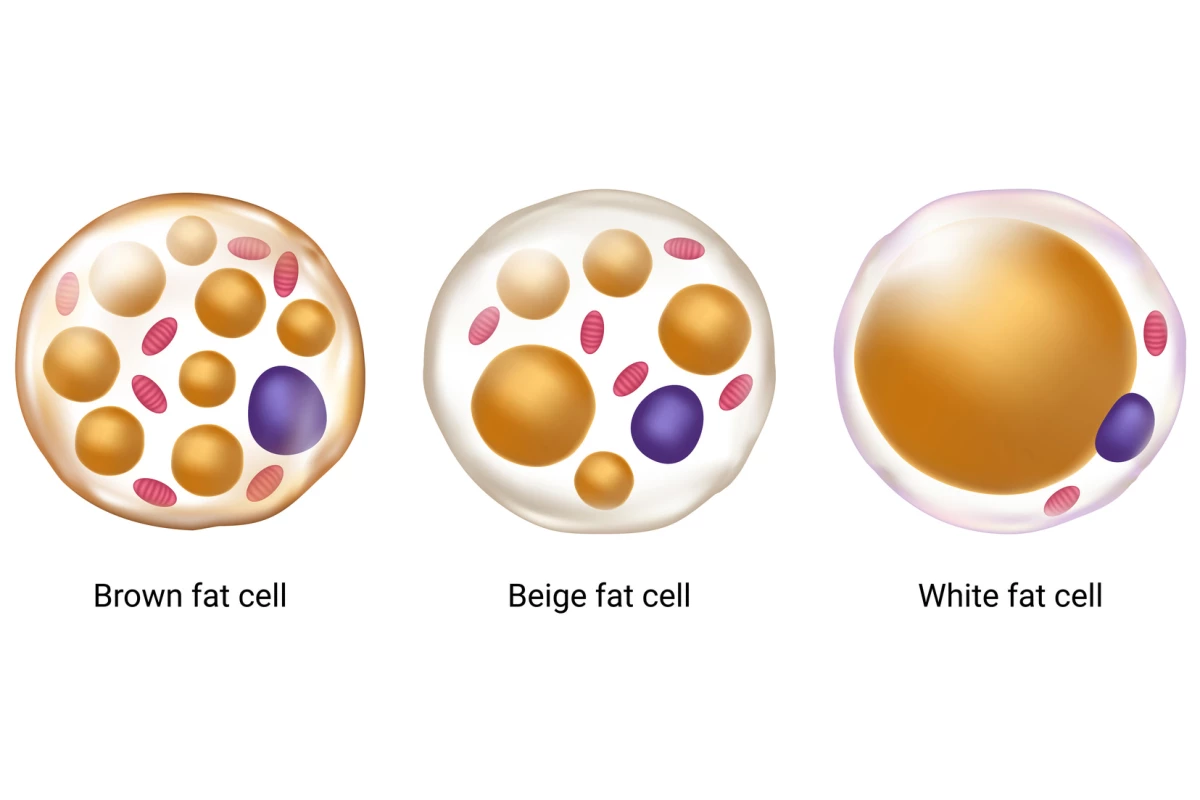A new study, the largest of its kind ever conducted in humans, has affirmed the link between the presence of brown fat and improved cardiac or metabolic health. The research validates the relatively new hypothesis suggesting the type of adipose tissue commonly referred to as brown fat confers broad health benefits.
The body harbors a few different kinds of fat tissue, but the most common is known as white fat. These are the fat cells we all try to get rid off and they're the type that comprise the vast majority of fat cells in our body.
Brown fat on the other hand is commonly thought to be much more metabolically active, being composed of higher amounts of iron-rich mitochondria that allows the body to rapidly burn it off. Brown fat is found in high volumes in babies, but until very recently it was thought we lost the capacity to generate it as we grew older.
In 2009, researchers discovered brown fat is still present in adults in small amounts. This discovery prompted a flurry of work investigating ways to turn white fat brown as treatment for obesity and other metabolic disorders.
One challenge slowing down research into the possible beneficial effects of brown fat has been the difficulty in detecting this particular kind of adipose tissue. Tobias Becher, first author on the new study, says brown fat is only detectable using PET scans, making it challenging to conduct mass population studies.
"These scans are expensive, but more importantly, they use radiation," says Becher. "We don't want to subject many healthy people to that."
So in order to get an insight into the effects of brown fat on a large population scale the researchers looked at data from more than 50,000 patients who had undergone PET scans for routine cancer evaluation. After adjusting for the influence of individual cancer types and stages, the researchers could effectively correlate the presence of brown fat with a number of cardio-metabolic conditions.

The results confirmed the presence of brown fat was associated with a lower prevalence of several chronic diseases. Those subjects with brown fat present were significantly less likely to have type 2 diabetes. Brown fat was also associated with lower levels of hypertension and coronary artery disease.
“While obesity is generally associated with decreased brown fat function, those obese individuals who retain brown fat activity appear to be protected against conditions linked to excess weight,” the researchers write in the newly published study. “This notion further supports the potential of brown fat as a therapeutic target beyond weight loss itself, but as a means to uncouple obesity from disease.”
While scientists know brown fat is much more rapidly utilized as an energy source by the body, it is still unclear how it may be generating broader health benefits. The association with lower rates of hypertension is one finding suggesting brown fat could be doing more than simply burning calories faster than white fat.
"We are considering the possibility that brown fat tissue does more than consume glucose and burn calories, and perhaps actually participates in hormonal signaling to other organs," explains Paul Cohen, another researcher working on the new study.
A large volume of research over the last few years has focused on finding ways to either stimulate the body to produce more brown fat, or turn pre-existing white fat into its more metabolically beneficial cousin. Proposed methods span everything from hormones that mimic exercise, nanoparticle injections, drugs and even gene therapies that could act like a "fat switch."
"The natural question that everybody has is, 'What can I do to get more brown fat?'" asks Cohen. "We don't have a good answer to that yet, but it will be an exciting space for scientists to explore in the upcoming years."
The new study was published in the journal Nature Medicine.
Source: Rockefeller University




